This summer, NEIWPCC staff joined the New York State Department of Environmental Conservation (NYSDEC) to perform multiplate sampling for macroinvertebrates on the Genesee River near Rochester, New York.
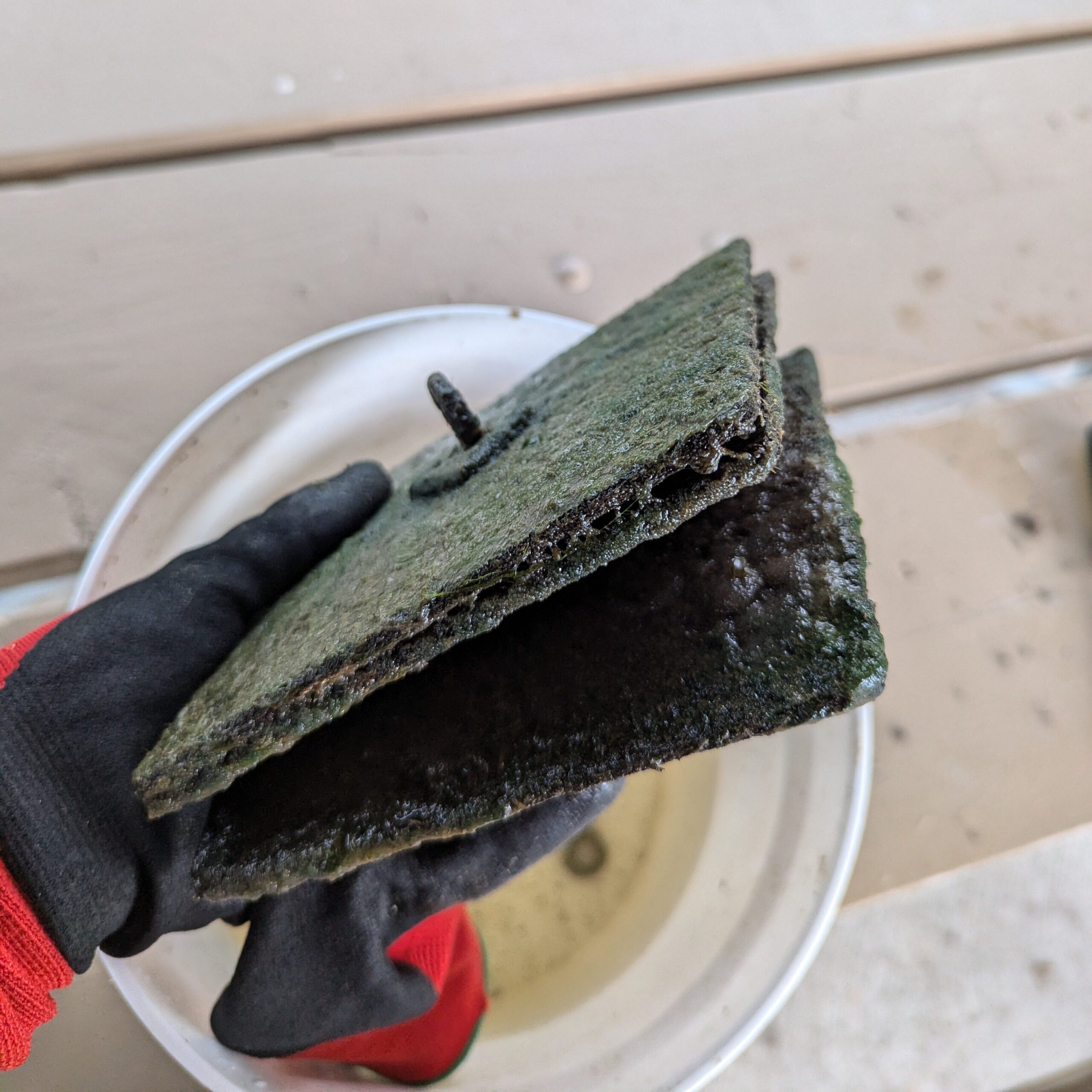
Multiplate samplers are designed to attract macroinvertebrates and other aquatic organisms. This sampler is made out of three 6-inch square tempered hardboard plates, separated by spacers, and mounted on a turnbuckle.
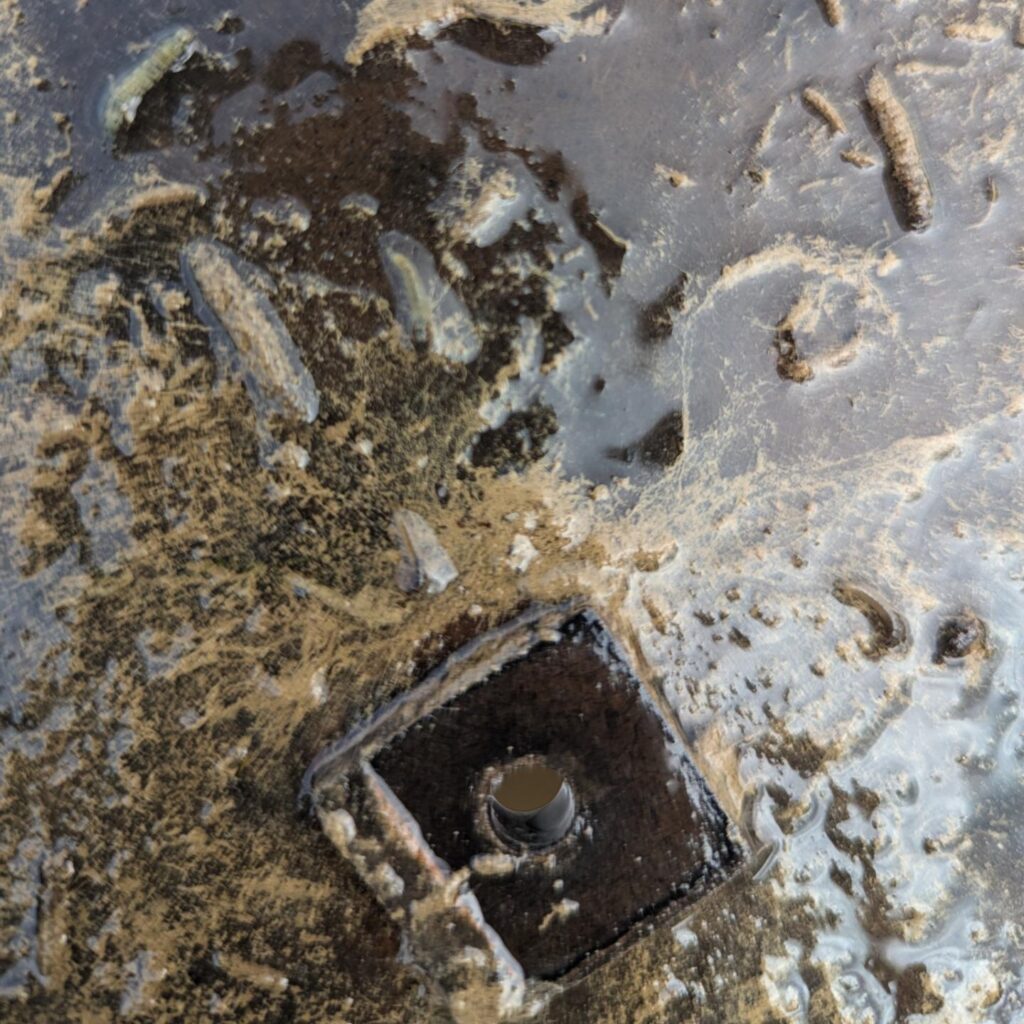
The samplers are deployed for about five weeks to allow time for colonization of the plates. The presence and absence of certain macroinvertebrates helps indicate the quality of the water. Various species of macroinvertebrates are shown here.
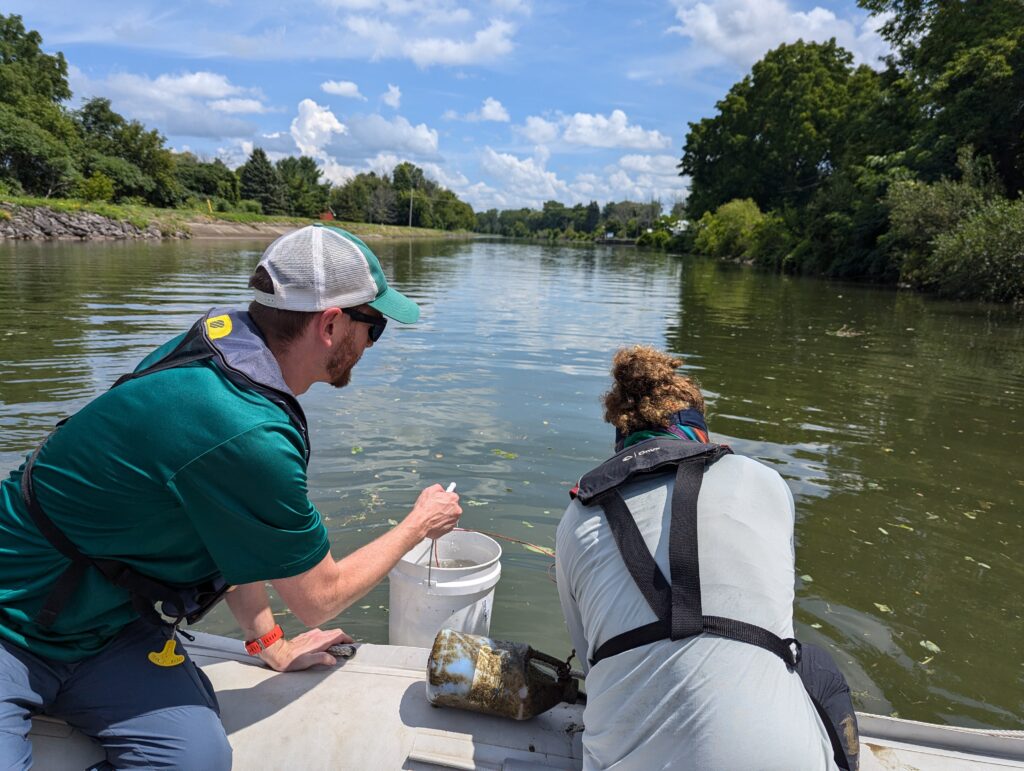
When it is time to retrieve the multiplates, additional water quality data are collected such as dissolved oxygen, pH, and water temperature.
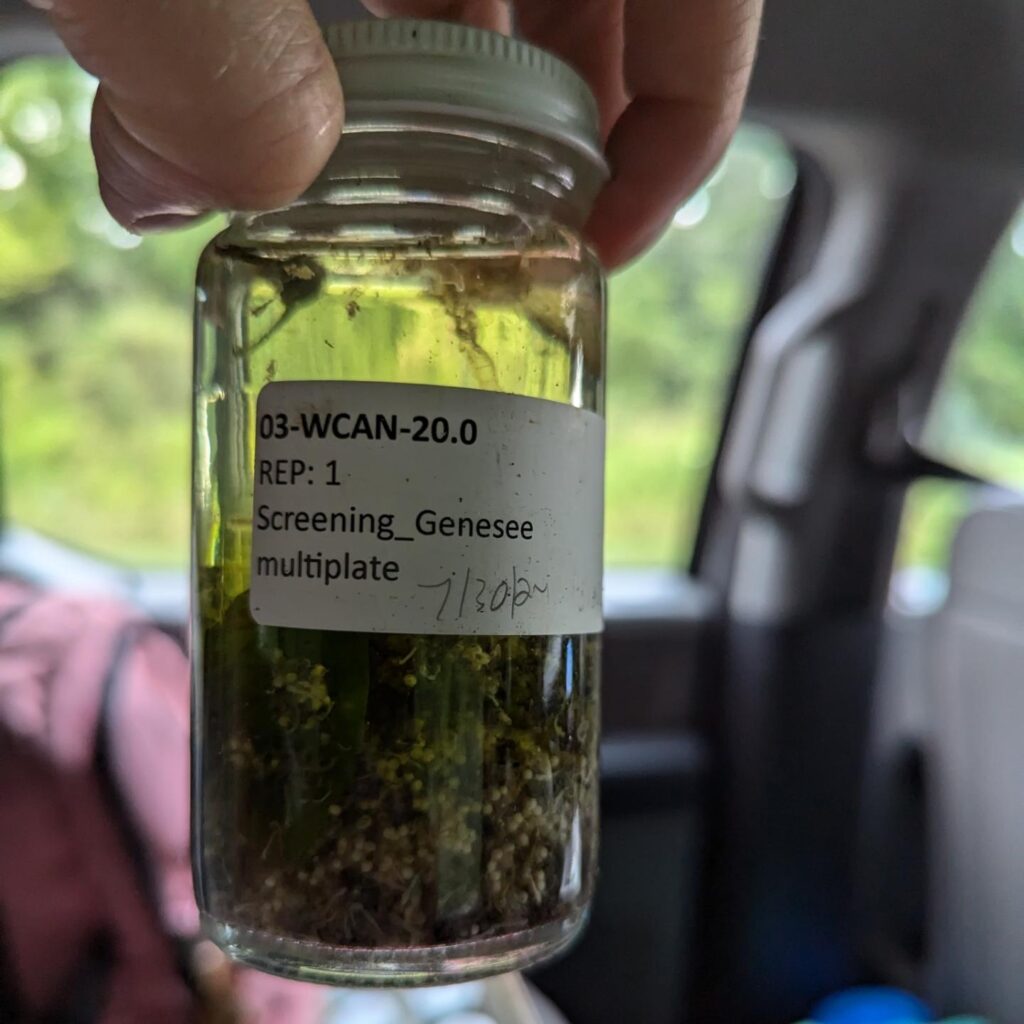
All accumulated organisms and other material are scraped from the plates with a paint scraper into stream water in a five gallon bucket. This water is then filtered using a sieve, rinsed and preserved before being sent to a laboratory for analysis.
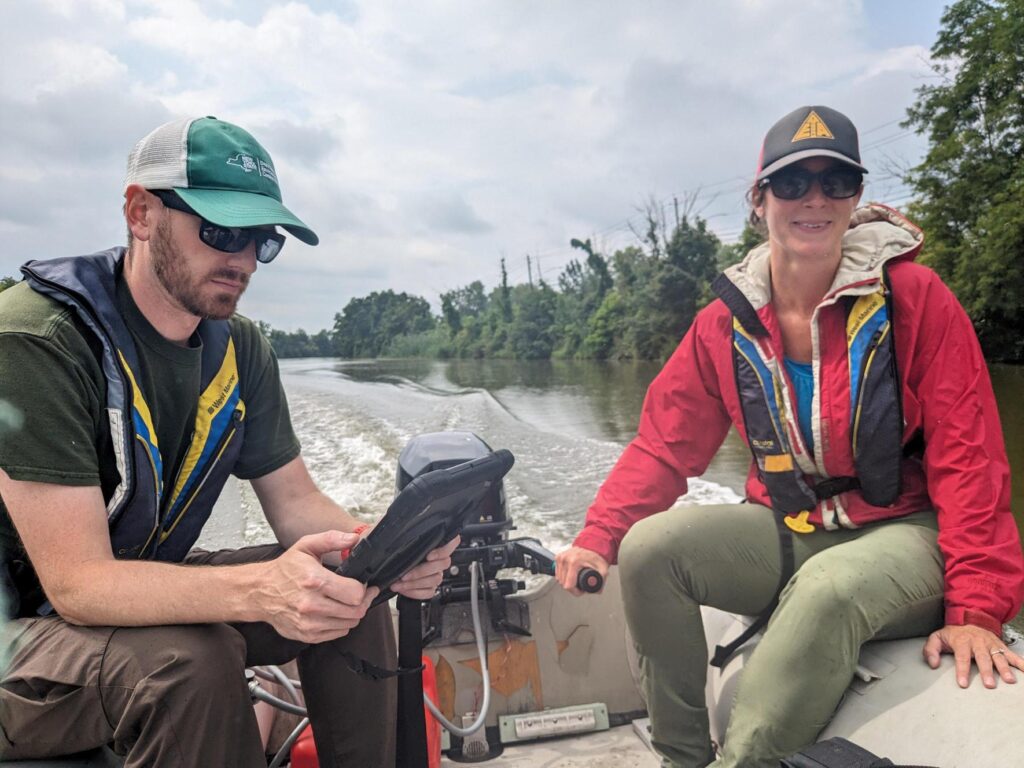
These data are a part of the NYSDEC’s Rotating Integrated Basin Studies (RIBS) program, and can be accessed through the NYSDEC Division of Water (DOW) Monitoring Portal, which is updated yearly.
While the teams awaits the final species list for these samples, they did identify larval caddisflies, mayflies, chironomids, worms and mussels.